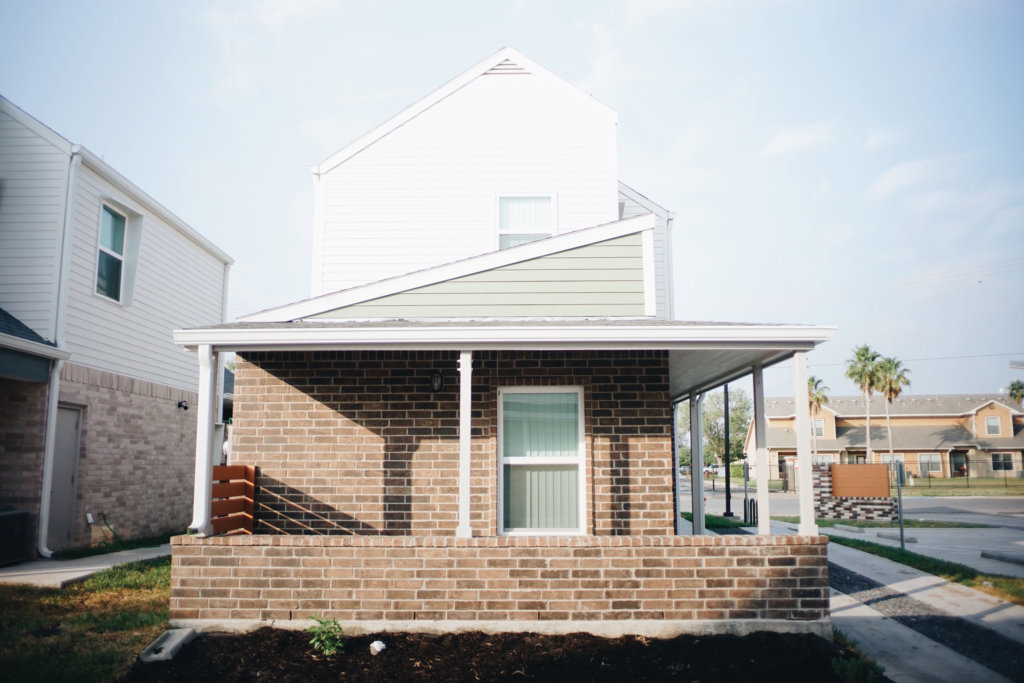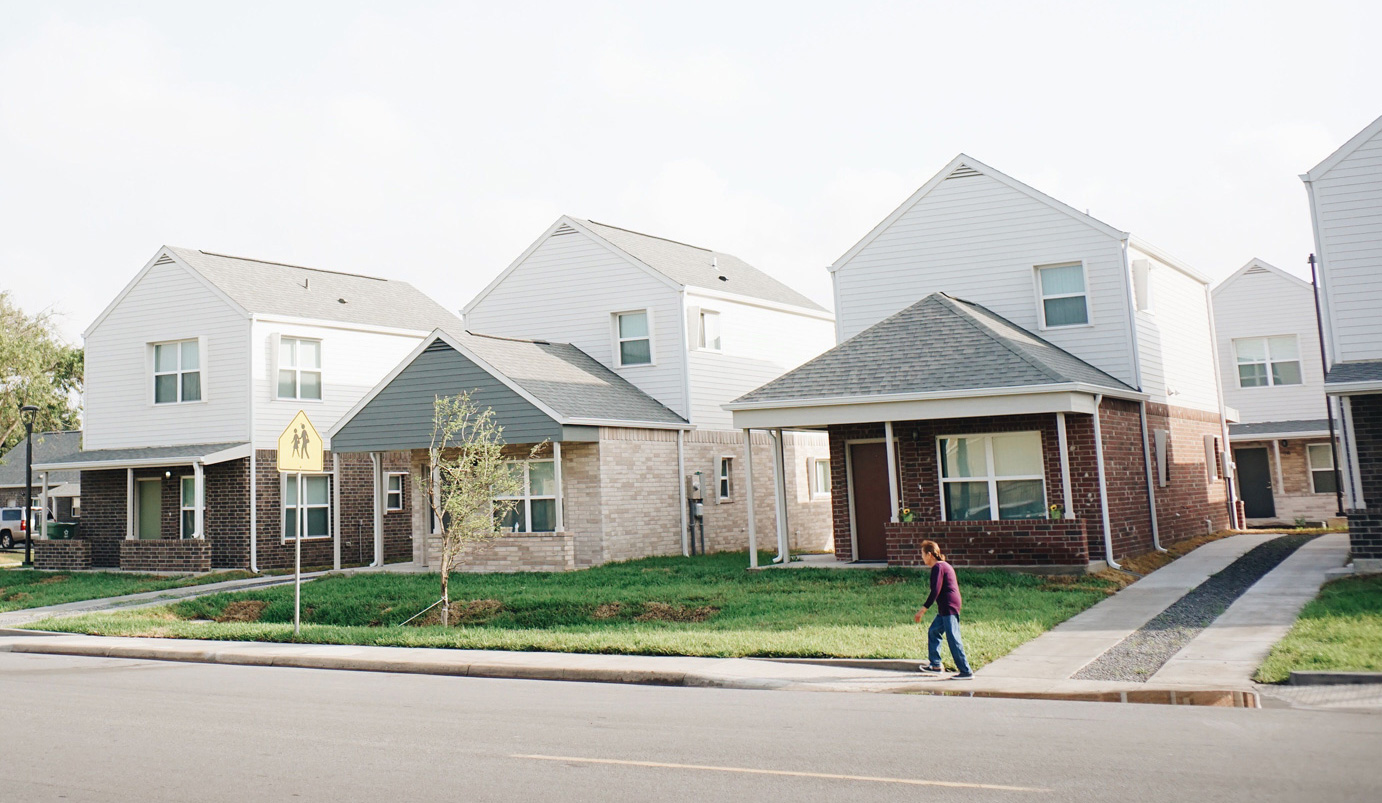There’s a growing need for affordable housing around the United States, yet federal and state budgets to spend on it are tight. In the rush to build as efficiently as possible, whether after a natural disaster or to accommodate more low-income families in a given area, good design is left by the wayside.
Many times, architects are unable to respond with anything more than cookie cutter designs that bear the stigma of affordable housing.
A quest to streamline the steps to build vibrant communities
Omar Hakeem, AIA, is Design Director at buildingcommunityWORKSHOP ([bc]). With offices in Texas and D.C. and work spanning across the U.S., [bc] has won several national awards and is becoming widely recognized in the realm of public interest design. Hakeem and his team at [bc] work with Archicad exclusively to streamline the steps to build vibrant communities, all the while acknowledging that in the affordable housing world, resources for construction can be limited – which in a way necessitates an intense design process.
“That robust, long-lasting design process is just not funded,” explains Hakeem. “Partly because funding is typically provided when the project is awarded at the very end of the design phase. Often the design requires many hours of up-front work and firms end up sitting and waiting for the project to begin.”

Speeding up the design process
[bc] has a project pending that began back in February of this year. Under the current protocol, the Low-Income Housing Tax Credit (LIHTC) project process, an architect submits a pre-application. The property owner may then engage an architect, who only has about a month and a half to turn around a design idea.
How do we push innovation in ways that support robust communities that are going to deal with structural systems of inequality?
Omar Hakeem
“So how do we push innovation in ways that support robust communities that are going to deal with structural systems of inequality? If you really want to dig down and start attacking the issues of poverty, inequity, racial injustice. If you want to get into the real deep stuff that surrounds affordable housing, that’s a lot of work, right? And right now, it’s not funded and there’s no real resource for it. What tools do we have to support an efficient process that also helps us get to great design outcomes? And that’s where Archicad has been helpful – it’s sped up our process on the front end.”

What this amounts to, explains Hakeem, is that once a project is awarded – construction documents (CDs) need to be done. That means that a firm is working “at risk” from February to July to complete CDs. In the case of [bc], the team uses Archicad and relies on their BIM.
It’s sort of like a race. Firms line up at the starting line waiting for the gun to go off and start running. But, since the race is funded by tax money or state appropriated funds which have a number of restrictions, it is as if the runners have to run with a five-pound sack of potatoes on their back. What Archicad does for Hakeem and his team is lifting at least some of that weight.
“This is what has been a game changer for us using Archicad. My construction documents are built-in to my design. My sheets are set up and I’m ready to go as soon as possible because we’ve used that software tool.”
The process helps firms like [bc] save valuable time. They may use a set of drawings from a previous project to comply with an owner’s objection to custom design. This presents a problem of perpetuating a standard “look” for affordable housing as well as stifling an architect’s creativity.
Breaking the mold of affordable housing
“The real reason why a person can point to a building and say ‘That’s affordable housing’ is because obviously they often look the same. They take the same typology, they have the same kind of set of materials, there’s the same configuration. And that’s not how we want to build our cities, and our towns, and our rural communities.”
Developers may in fact want to break the mold of affordable housing and engage artists or creative elements to change the status quo, but Hakeem points out that right now, the process doesn’t support that type of time and financial investment. That’s part of what made him change his methods.
“In order to support this process, we had to change the way we do it. Yes, the rules need to change, but so do the tools we use. We have a strong template, our materials and composites are set up through Archicad, putting us one step closer. What we’re doing now is we have schedules and take offs set up with a pretty simple spreadsheet tool where we’re pulling quantity data out of our construction model, out of our building models, transmitting those to the owner and builder early on. This is essentially an integrated project delivery process that gets us quantities that can help us get our projects budgeted early. Speeding up so that we can be really competitive in the affordable housing market.”

Navigating a new project delivery process
The technical, tactical and efficient ways Archicad allows [bc] to move through the project delivery process in a smooth way are apparent. But Hakeem had more to say about features in Archicad, namely BIMx.
“Renderings take a lot of time and energy – so with BIMx we get a really smooth, efficient visualization process. BIMx allows us to, in an affordable way that doesn’t take us a lot of time, be able to go in and show someone a VR model on Google cardboard. I just did a field visit/presentation in West Virginia on a workforce housing project that we’re doing. We were able to present in VR and in augmented reality just boom, right out of the box. It’s really helpful to us.”
[Using BIMx] We were able to present in VR and in augmented reality just boom, right out of the box. It’s really helpful to us.
Omar Hakeem
About the buildingcommunityWORKSHOP
The buildingcommunityWORKSHOP is a Texas-based nonprofit community design center seeking to improve the livability and viability of communities through the practice of thoughtful design and making. We enrich the lives of citizens by bringing design thinking to areas of our city where resources are most scarce. To do so, [bc] recognizes that it must first understand the social, economic, and environmental issues facing a community before beginning work.
For more information visit http://www.bcworkshop.org/
